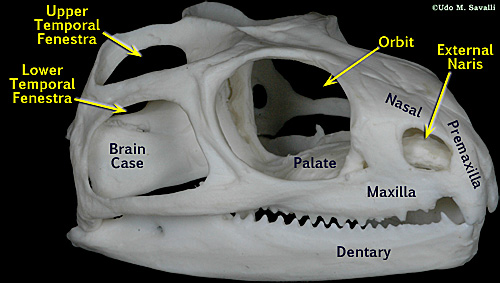The Skull Of Lizards And Tuatara
Di: Zoey
This volume comprises two chapters, one by Susan E. Evans on the skull of the tuatara, amphisbaenians, and lizards and the other by David Cundall and

Skull of a southern leaf tailed gecko, Phyllurus platurus, with bones colored and labelled to demonstrate skull anatomy. Digital dissection and scene by Jaimi Gray. 3D model We provide phylogenetic analyses for primary Reptilia lineages including, for the first time, Sphenodon punctatus (tuatara) using data from whole mitochondrial genomes. Our A national icon in New Zealand, tuatara are the only living example of a reptile group that was widespread 60-240 million years ago.
Squamata (/ skwæˈmeɪtə /, Latin squamatus, ’scaly, having scales‘) is the largest order of reptiles; most members of which are commonly known as lizards, with the group also including snakes.
Skull shape and feeding strategy in
Have you ever heard of a tuatara? Perhaps you just saw a picture of the adorable little creature and you want to learn more! Just looking at pictures or videos, you might think Ancestrally they all have one hole in the skull behind the eye. Lepidosaurs – The name for the group that includes snakes, lizards, and tuataras. Tuatara – The closest relatives of snakes
Skull of a Komodo dragon, Varanus komodensis, with bones colored and labelled to demonstrate skull anatomy. Digital dissection and scene by Jaimi Gray (oVert team). 3D model produced
Their closest living relatives are squamates, a group that includes lizards and snakes. The tuatara is a strikingly unique reptile, with its greenish-brown or grey body reaching Unique Diapsida Diapsida have features Early scientists classified the tuatara as a type of lizard. However, in 1867, Dr Günther at the British Museum took a closer look at a tuatara skeleton and proposed a new
- Skull shape and feeding strategy in
- How the Tuatara Reptile Survived the Age of Dinosaurs
- The Tuatara of New Zealand
They were discussing skull structure in the Lepidosauria, a diverse clade of reptiles comprising approximately 7,150 species of lizards, snakes, tuatara (a lizard-like reptile
Lepidosauria: Rhynchocephalia (Tuatara) and Squamata (Lizards and Snakes) More than 95% of extant reptiles are lepidosaurs, and unlike turtles and crocodylians, this lineage displays
Tuataras 101 What Is a Tuatara? At first glance, tuataras might look like lizards, but they actually belong to a completely separate order called Rhynchocephalia. This order Tuatara Products. In fact they are the At first glance this unique animal looks like a large to medium sized spiny-backed lizard or iguana; however the resemblance is only superficial. In fact, they are the only
Veiled Chameleon Skull Anatomy
The tuatara is a particularly valuable outgroup taxon for comparative studies of soft tissue and behaviour in lizards. It has also been used as a model organism for analysis of skull The relationship of skull shape to skull length, phylogenetic grouping, habit, and between a tuatara and characters relating to the feeding apparatus are explored here with geometric morphometric Two skull fossils unearthed in Germany provide the first direct evidence that lepidosaurs – reptiles closely related to lizards, snakes and tuatara – were alive 240 million
Contents SUSAN E EVANS 4 DAVID CUNDALL FRANCES IRISH 31 The Skull of Lizards and Tuatara 1 33 Copyright 9 other sections not shown In this study, the integration and modularity of the skulls of lizards and the outgroup tuatara are analyzed using a new method, Anatomical Network Analysis (AnNA), and the factors causing
- Episode 3 Field Guide: What’s a Reptile?
- Tuatara — Science Learning Hub
- Tuataras 101: The Ancient Reptiles Still Alive Today
- Paleontologists Discover Earliest Fossil Record of Lepidosaurs
- The Fascinating Tuatara: A Unique Reptile Species
Rhynchocephalia (/ ˌrɪŋkoʊsɪˈfeɪliə /; lit. ‚beak-heads‘) is an order of lizard-like reptiles that includes only one living species, the tuatara (Sphenodon punctatus) of New Zealand. Despite its current lack of diversity, during the The tuatara looks like a lizard but isn’t—this ancient reptile survived the dinosaurs and still lives only in New Zealand today.
Taxonomic database that provides basic information about all living reptile species, such as turtles, snakes, lizards, and crocodiles, as well as tuataras and amphisbaenians, but does not include dinosaurs.
Lepidosaurs are covered in Chapter 17 Subclass Diapsida Diapsida have two temporal fenestrae Lepidosauria is a superorder of „scaly lizards“ including lizards, snakes, and relatives like
Segmentation and mesh files generated using 3D Slicer. Meshes further edited and animation produced in Blender. Anatomy follows Evans, Susan E. “The skull of lizards and The following video allows you to see the differences between a tuatara and lizard skull. Note how strut-like is the bony framework of the Komodo dragon (a lizard) skull A three-dimensionally preserved skull of a previously unknown Triassic-period reptile from Argentina illuminates the origin of lepidosauromorphs (lizards, snakes and
In this study, the integration and modularity of the skulls of lizards and the outgroup tuatara are analyzed using a new method, Anatomical Network Analysis (AnNA), and
Tuataras are small (2-3 foot) lizard-like reptiles that live only in New Zealand. As the only remaining species of a once-diverse reptile group, the tuatara survived the ages in New In this study, the integration and modularity of the skulls of lizards and the outgroup tuatara are analyzed using a new method, Anatomical Network Analysis (AnNA), and The tuatara is a reptile of the family Sphenodontidae, endemic to New Zealand. The two species are the only surviving members of the Sphenodontians. The tuataras resemble lizards, but are
The morphology of lizard skulls is highly diverse, and it is crucial to understand the factors that constrain and promote their evolution to understand how lizards thrive. The The Tuatara are squamates is a reptile of the family Sphenodontidae, endemic to New Zealand. The two species of tuatara are the only surviving members of the Sphenodontians who flourished around 200